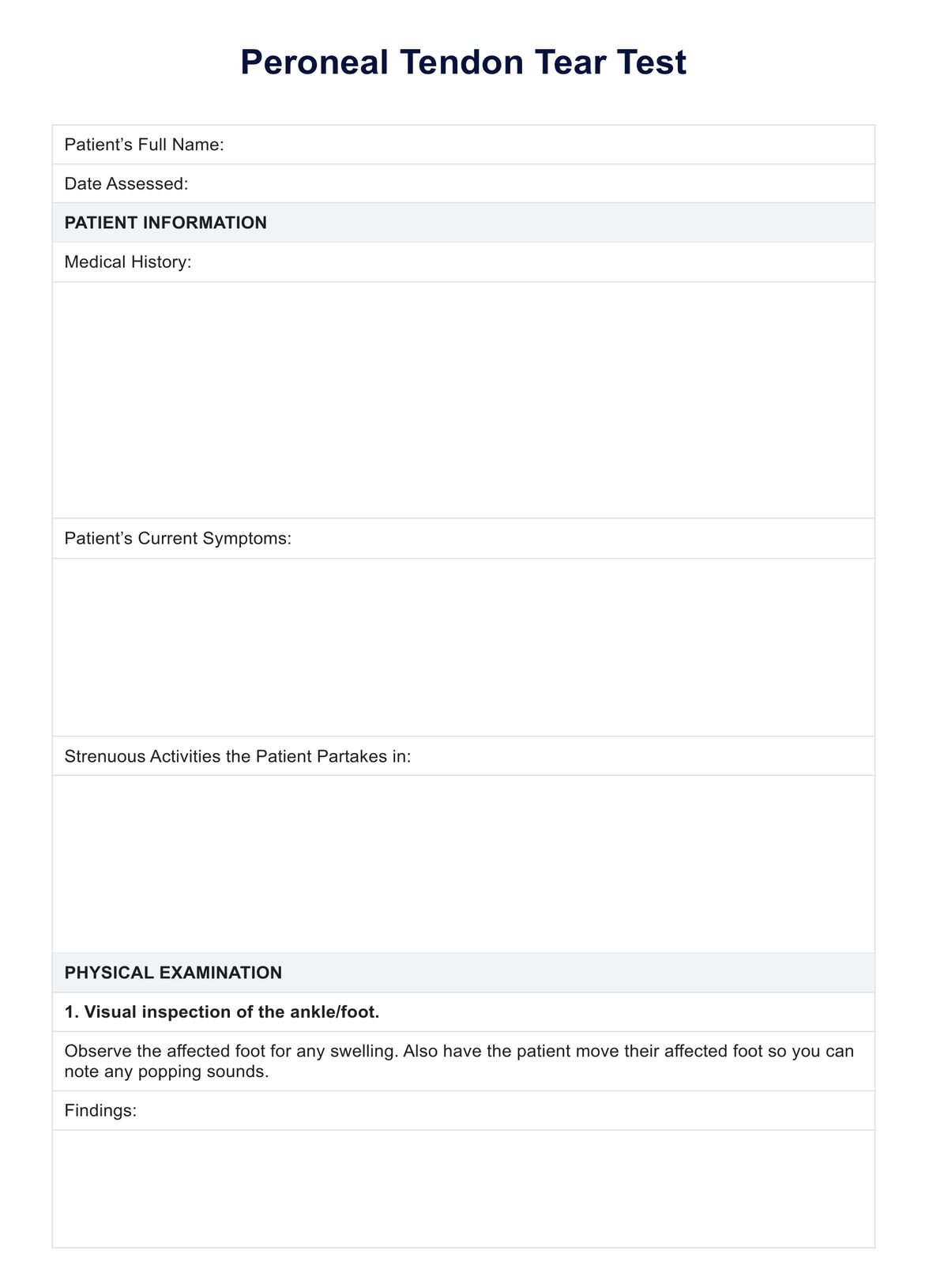It can take eight to twelve weeks. If it was repaired via surgery, it may take four months.

Peroneal Tendon Tear Test
Learn about the Peroneal Tendon Tear Test and use our template to record results!
Use Template
Peroneal Tendon Tear Test Template
Commonly asked questions
If a peroneal tendon tear isn’t addressed and left untreated, the affected foot might lose stability, feel chronic pain, and can make a person prone to recurring ankle sprains. These may eventually lead to disability and decreased mobility.
Yes. It’s best to take preventive measures and properly rehabilitate the affected foot to lessen the chances of it recurring.
EHR and practice management software
Get started for free
*No credit card required
Free
$0/usd
Unlimited clients
Telehealth
1GB of storage
Client portal text
Automated billing and online payments











